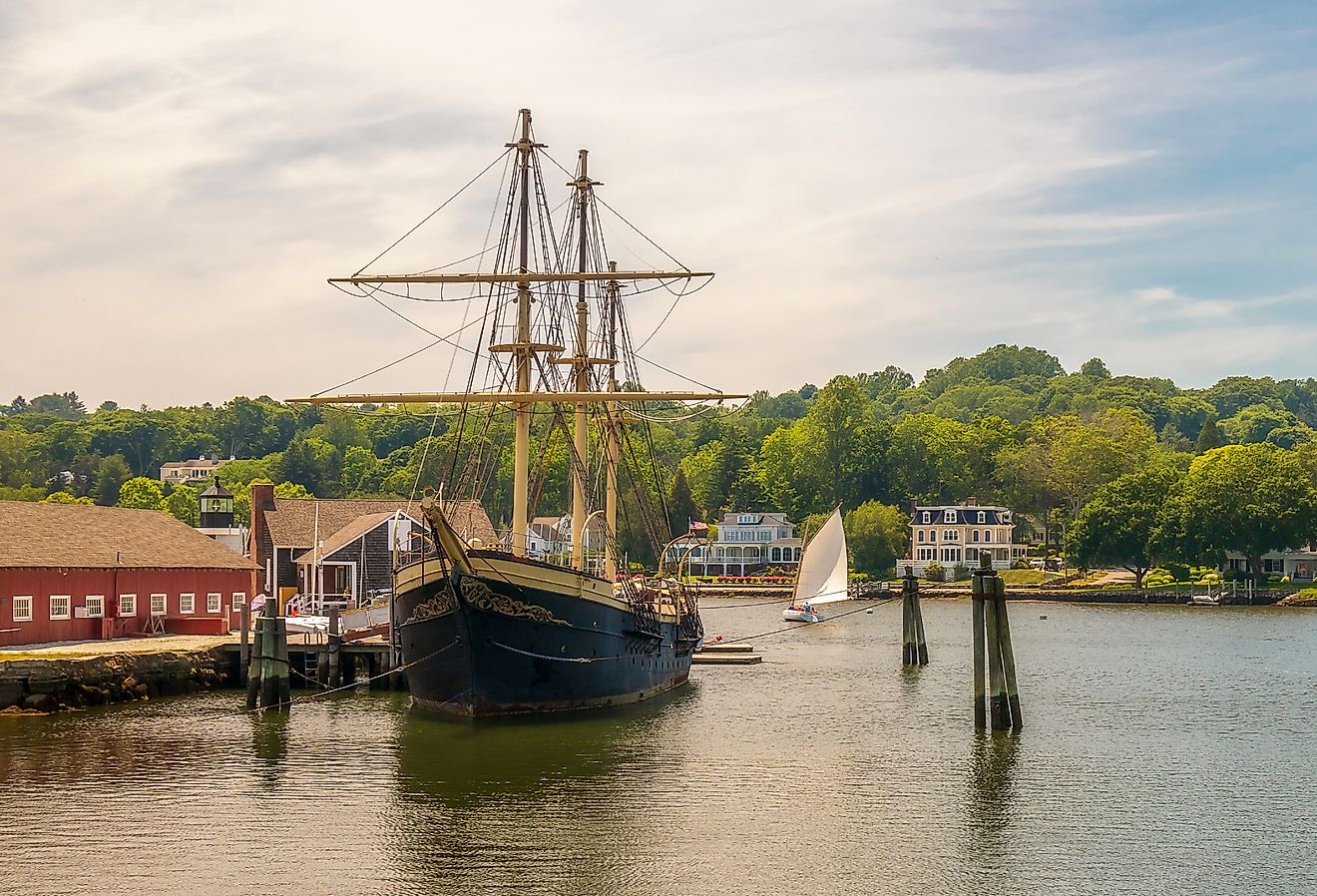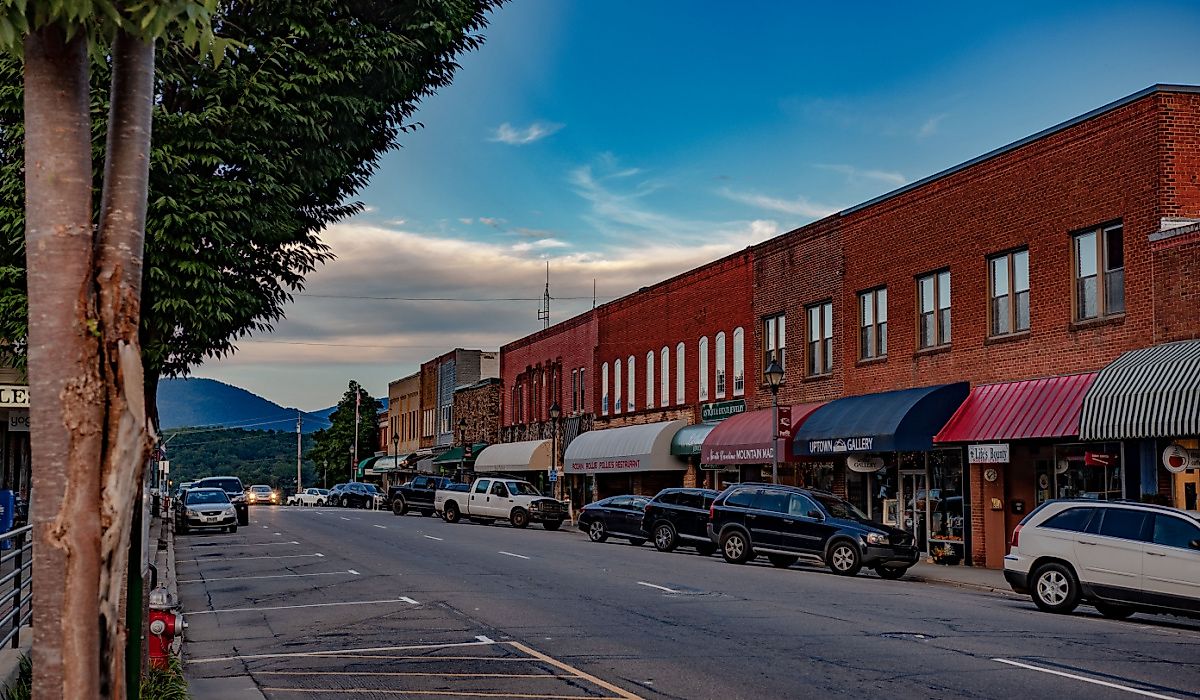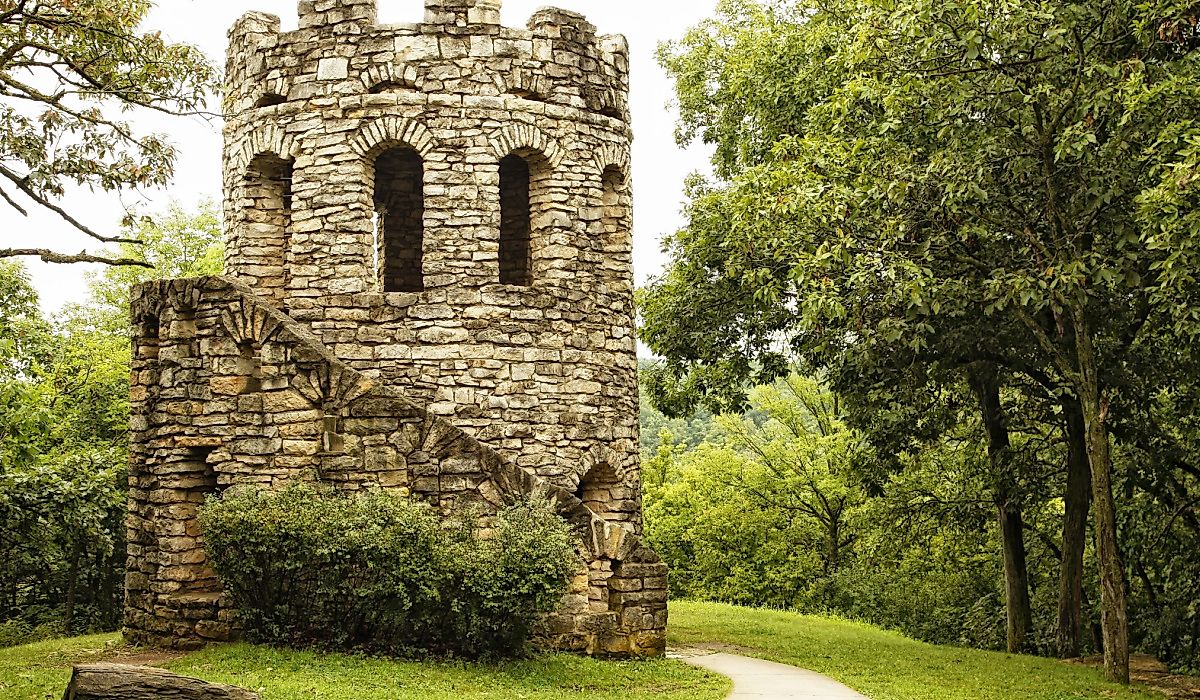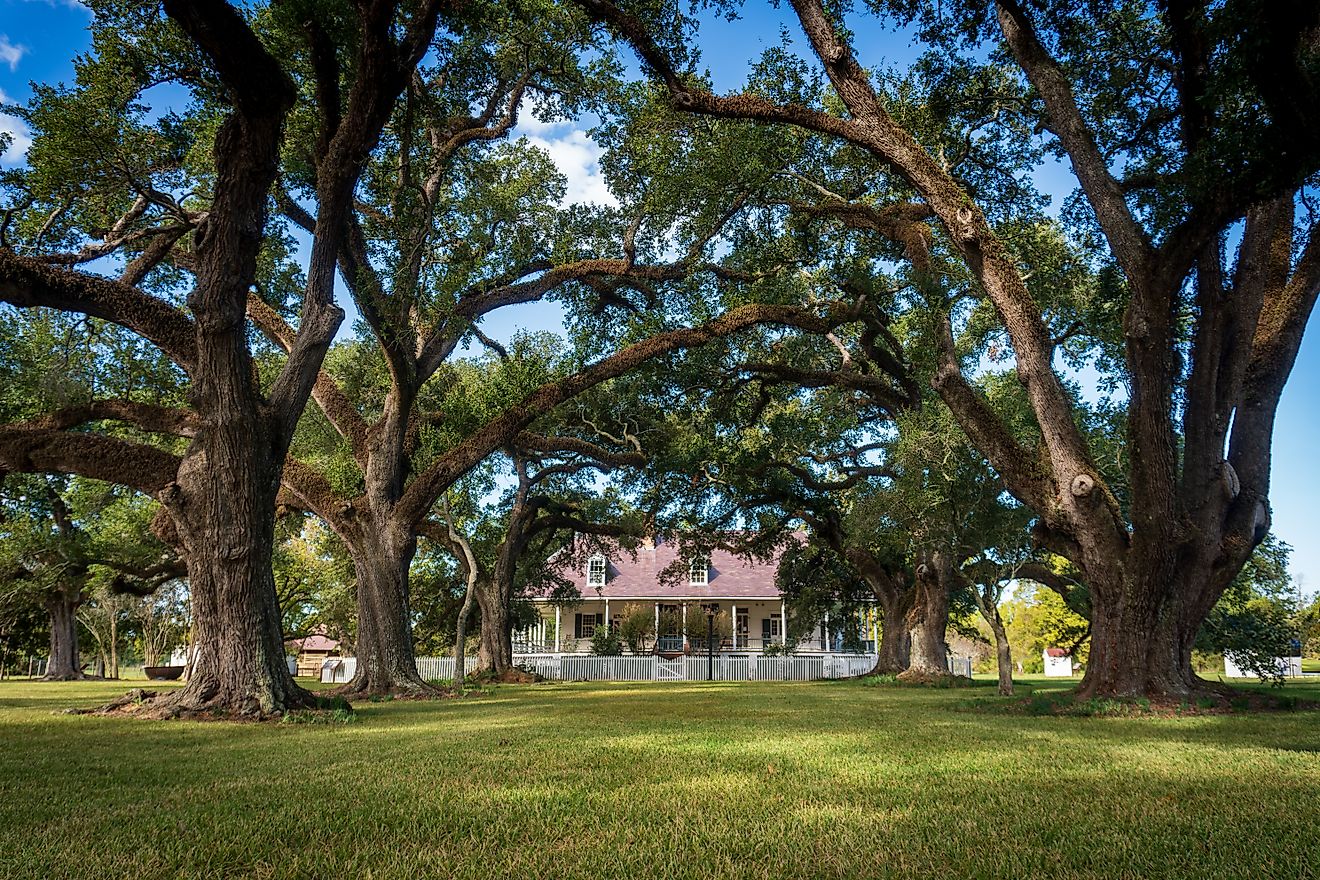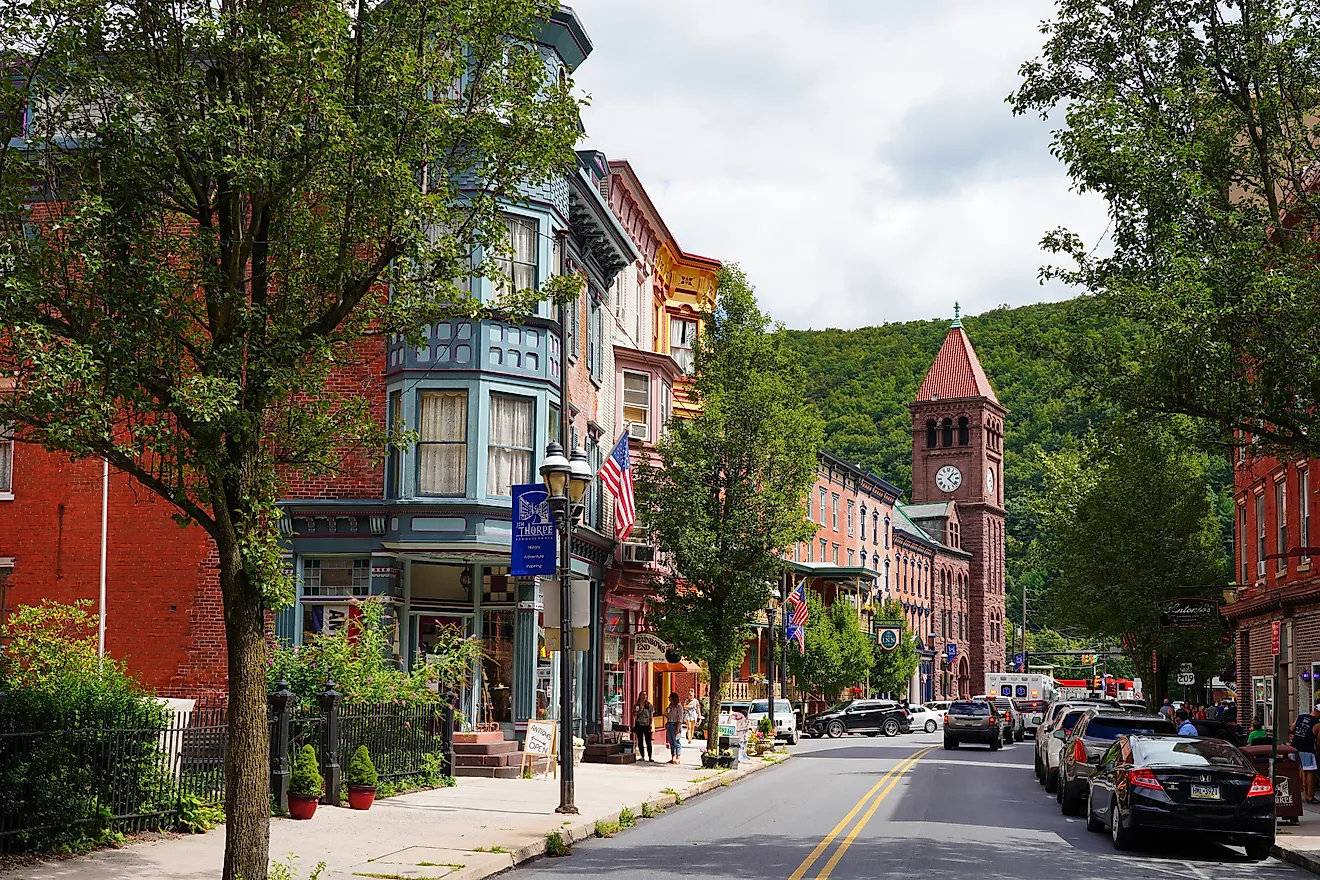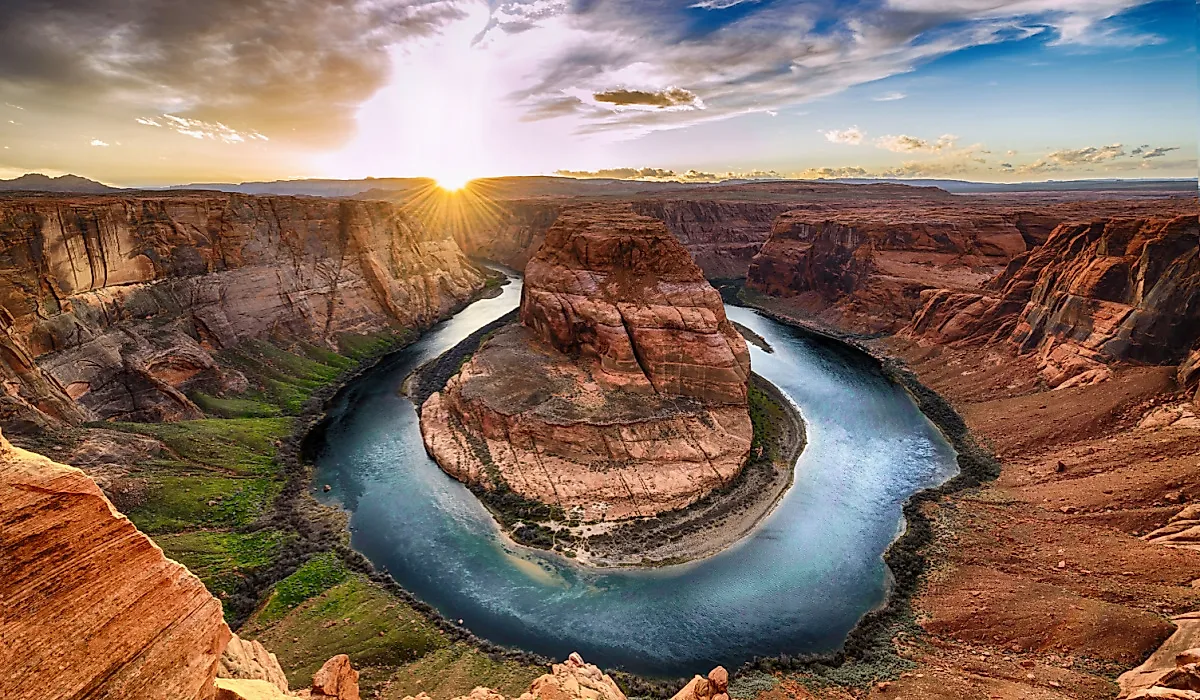
Grand Canyon National Park Layers Geologic Time Into One Jaw‑Dropping Sunrise
The deserts of the American Southwest are home to some of the most desolate yet epic scenery in the United States. One does not usually think about this corner of the country without the Grand Canyon coming to mind, among the most impressive displays of geology on the planet.
Surrounding it is none other than Grand Canyon National Park, a true playground for both the sciences and outdoor activities. Whether you're set out to cross the canyon on foot, overnight camp under the area's incredibly clear skies, or simply just soak in the scenery from any of the numerous lookout points along the rim, it is certainly a place where you'll want to stay for more than an afternoon if possible, especially if its means you can catch the sun rising or setting.
How the World's Greatest Canyon Came to Be
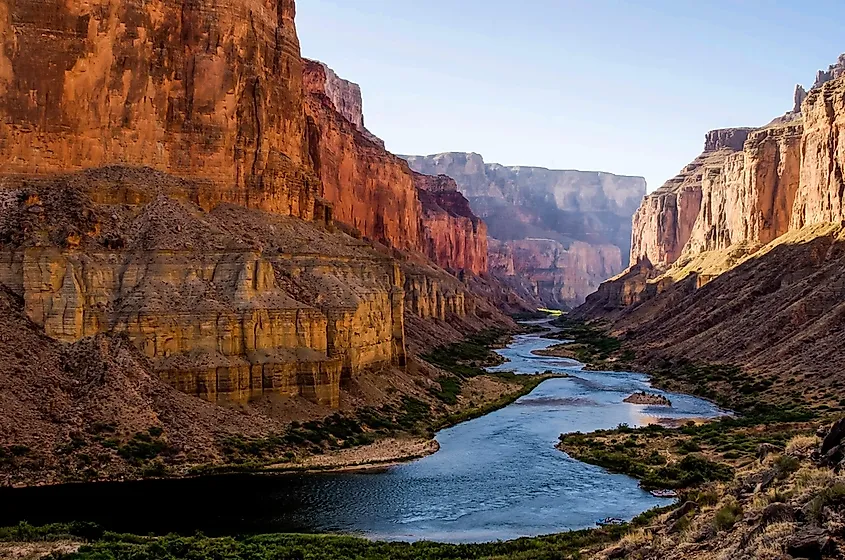
The Grand Canyon, located in northern Arizona, is a massive geological formation carved by the Colorado River over millions of years. It stretches approximately 278 miles in length, with widths ranging from 4 to an impressive 18 miles, sometimes making it hard to even see the other side. Moreover, depths exceeding 6,000 feet have been measured at its deepest point! The region lies within the Colorado Plateau, a high desert area marked by dramatic geological uplift.
The canyon exposes nearly two billion years of Earth’s history through its many layers of exposed rock, from ancient Vishnu Schist at the bottom to younger Kaibab Limestone at the rim. At the present time, the geography of this region is exemplified by its impossibly steep cliffs, far-reaching plateaus, towering buttes, and countless side canyons, all shaped by the powers of erosion, weathering, and tectonic activity. At the canyon’s floor, the Colorado River flows, continuing to erode and transport sediment to its end near the Gulf of California (Sea of Cortez).
The North Rim and South Rim differ in elevation, with the North Rim averaging 1,000 feet higher, resulting in cooler temperatures and denser vegetation. You'll notice more natural flora and fauna in the north due to there being far less human development, too. On the other hand, the south side is where most of the national park infrastructure can be found today.
When and How Did it Become a National Park?
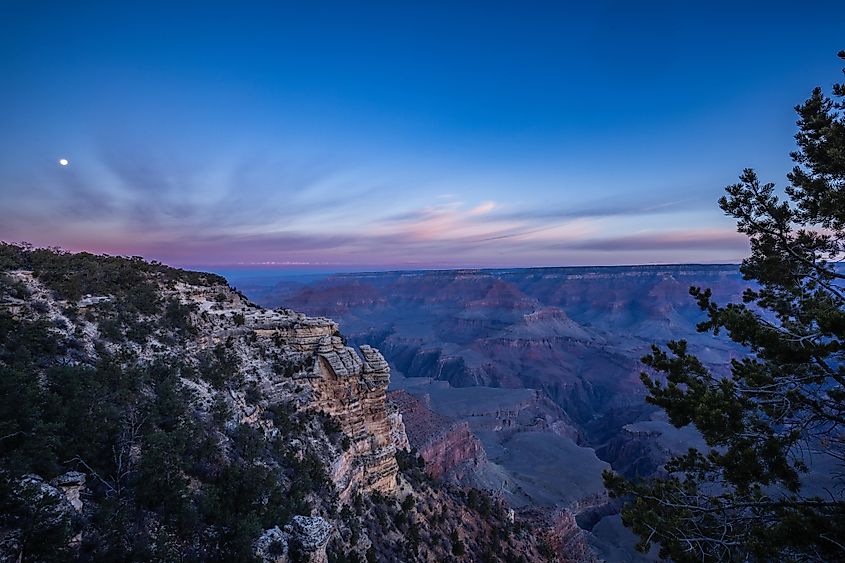
Grand Canyon National Park was officially established on February 26, 1919, making it the 15th national park in the United States. Efforts to protect the canyon began earlier, with President Benjamin Harrison officially designating it a forest reserve in 1893, and President Theodore Roosevelt declaring it a national monument in 1908. As with the earliest days of many other national parks across the country, Roosevelt was a strong advocate for preserving this specific area, recognizing its scientific and scenic value for all.
The push for full national park status faced opposition from mining and development interests but, thankfully, it ultimately succeeded due to growing public support for conservation around the turn of the century. The park’s creation ensured federal protection of its unique landscapes, cultural sites, and geological history, all aspects that continue to be studied by officials and appreciated by the public to this day.
In 1979, UNESCO designated it a World Heritage Site, and it has since been expanded as well, now covering over 1.2 million acres. With its rightfully special status, the Grand Canyon still stands as one of America's greatest wonders and a historic symbol of the country's early conservation movement.
Renowned by outdoor adventurers and nature lovers alike, its greatest draw (besides its many amazing trails and campgrounds) is perhaps the sheer beauty of the sunrises and sunsets that can be witnessed here almost every day.
Where to See the Best Sunrises in Grand Canyon National Park?
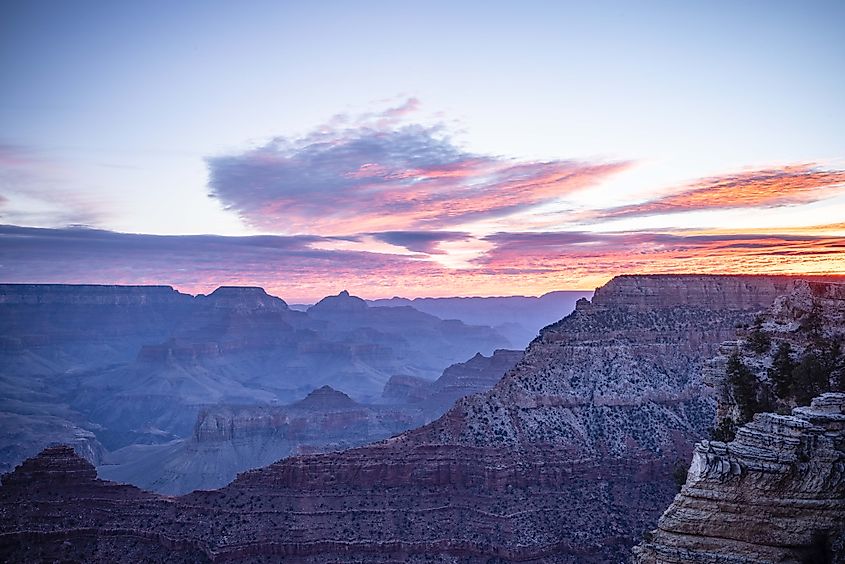
Sunrises in the Grand Canyon are truly special, revealing the canyon's lofty walls in shifting shades of pink, orange, and gold for a brief period of time. If you want to know where to go to see one for yourself, Mather Point, on the South Rim, is among the most popular spots, offering a wide, unobstructed view of the canyon and the Colorado River below. Moreover, Yaki Point, accessible via shuttle or on foot, provides a quieter alternative with equally expansive vistas. Another option is the Desert View Watchtower on the eastern edge of the South Rim, which pairs sunrises with a prominent panoramic outlook and lots of space to move around, with sightlines here also stretching across to the nearby Painted Desert.
On the North Rim, there are far fewer named points of interest, although it definitely experiences less crowding, too. Point Imperial delivers a higher elevation view, with early light illuminating the canyon’s northern expanse. Cape Royal is another excellent northern locale, where the canyon's many rocky layers pop out extra well in the warm sunlight.
Arriving before first light is essential to witness the transformation from predawn blues to the golden glow that floods the park's depths as the sunrise develops to its peak. Clear mornings, of course, offer the most dramatic scenes, though landscape photographers tend to like light clouds, as they can add depth and texture to the already awe-inspiring display.
And Sunsets?
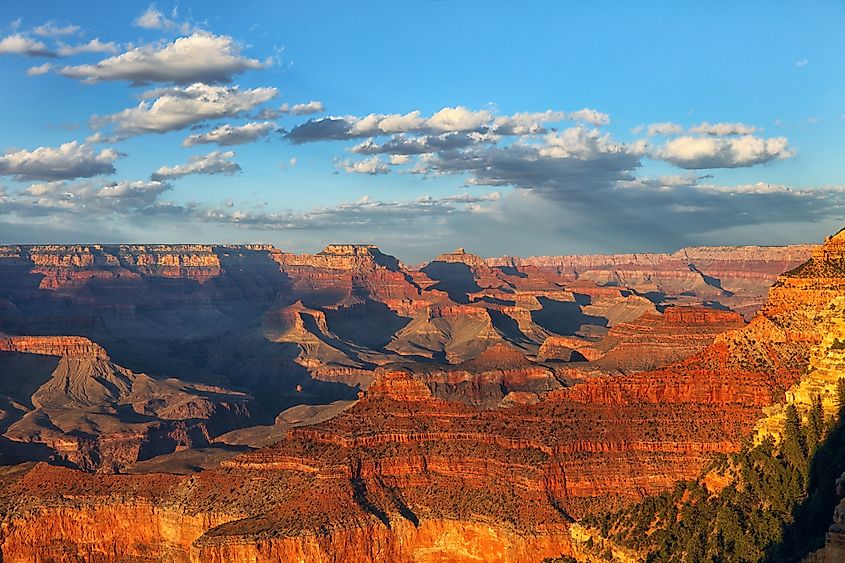
If you are not an early riser, sunsets at the Grand Canyon can be enjoyed on the South Rim at Hopi Point, a top choice with a broad west-facing view ideal for capturing the day's final light. Pima Point, farther west along Hermit Road, offers a similar outlook with fewer visitors. Furthermore, Desert View again provides striking vistas, especially when the fading sun meets the distant desert horizon.
To the North Rim, Cape Royal is yet again unmatched for its sweeping, quieter perspective, where the setting sun casts long shadows across distinct nearby rock formations.
What To Do Between Dawn And Dusk
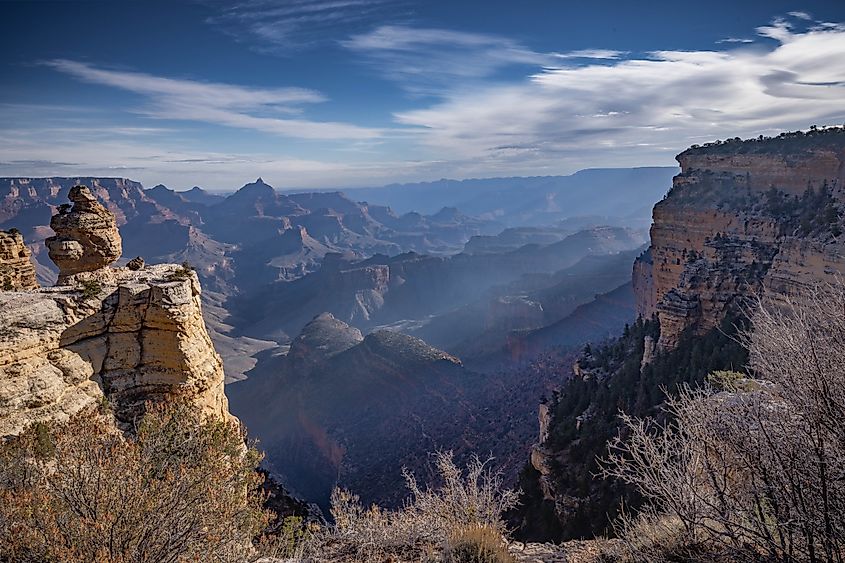
Beyond viewing the canyon from its high-rising overlooks, Grand Canyon National Park boasts a range of daytime activities for all interests and fitness levels. Hiking is one of the most popular pursuits, with trails ranging from short rim walks to challenging routes into the heart of the canyon. The Bright Angel Trail and South Kaibab Trail provide access to the riverbanks, while the Rim Trail offers easier, mostly paved sections with frequent shuttle stops.
Cycling is permitted along certain paved roads as well as the Greenway Trail system. For a longer outing, various scenic drives, including Desert View Drive and Hermit Road, present numerous pullouts for photography and exploration. Picnicking at designated areas allows for a relaxed midday break with epic canyon views as you eat.
Down on the Colorado River, rafting trips range from half-day, smooth-water excursions to multi-day whitewater adventures with several companies and outfitters offering guided runs. Land or water, be sure to keep an eye out for the region's abundant wildlife, with chances to spot elk, bighorn sheep, and even California Condors!
For those seeking less strenuous options, the park’s visitor centers, such as the Grand Canyon Visitor Center and Yavapai Geology Museum, each house exhibits on the area’s natural and cultural histories. They also contain useful amenities like bathrooms, gift shops, and light food options.
Check Out All the Sights and Sounds of the Grand Canyon
Between its famous trail systems and its easily accessible viewpoints, this world-renowned park deep in the deserts of Arizona is an absolute must for travellers anywhere nearby. If anything, make a point of arriving for a sunset or sunrise to be able to witness one of the most beautiful displays of light and geology in the entire world. You will not regret going out of your way to do so, trust us on that.

